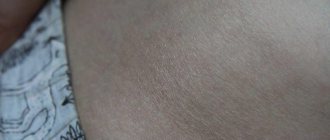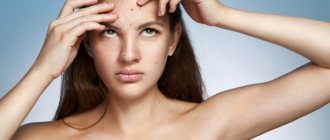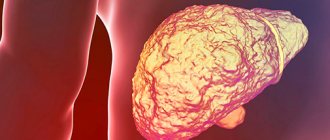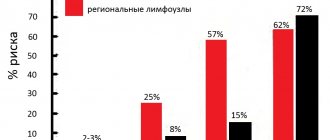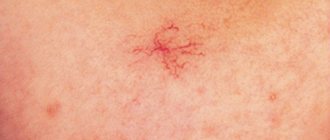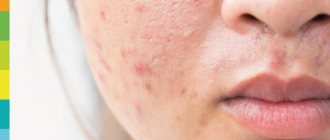There is an opinion that representatives of the stronger sex are not as worried about their appearance as beautiful ladies. In fact, acne causes just as much discomfort in men as it does in women. Representatives of both sexes are actively looking for a solution to this problem.
Most often, acne on a man's body appears on the back, shoulders and chest. This is due to the presence of a large number of sebaceous glands in these areas. Against the background of hypersecretion of sebum, it mixes with epidermal scales and bacteria. This mixture, in the form of a plug, clogs the duct of the sebaceous gland and causes inflammation. This is how acne and ulcers appear.
Why do acne occur on the body of men?
The appearance of acne is promoted by:
- disorders of metabolic processes in the body;
- disruptions in lipid metabolism;
- skin diseases (follicular keratosis);
- disturbances in the functioning of the sebaceous glands (increased production of sebum).
In addition, pimples on the body are associated with wearing tight clothes made of synthetic fabrics. It prevents free air exchange of the skin, creating conditions for increased sweating and sebum production.
Acne on a man's body can be associated with mechanical irritation of the skin (rubbing with stitches). Acne often appears in athletes taking anabolic steroids. Living in a hot, humid climate also contributes to the development of pustules.
Contact with petroleum products, machine oils and chlorine due to professional activities leads to skin rashes. Acne can also appear due to hyperinsolation (long exposure to the sun).
Acne* on the back: which organ may not be working properly?
There is a myth that the location of acne is related to the functioning of a particular organ. Here are the organs that acne* on the back is supposedly responsible for [208]:
- liver (hepatitis);
- organs of the gastrointestinal tract;
- genitourinary system;
- endocrine system.
In fact, it is impossible to determine which organ hurts based on acne* on the back, because this hypothesis has no scientific evidence. Therefore, when treating rashes, specialists do not rely on this theory.
Internal factors for the development of acne in men
Skin rashes can signal malfunctions of internal organs, in particular those that affect the functioning of the sebaceous glands. Acne can appear as a result of:
- poor nutrition, alcohol abuse. Spicy and fatty foods, as well as sugar, activate the sebaceous glands, which produce sebum in excess, which leads to clogging of the ducts and the appearance of acne in men;
- hormonal imbalance. It may be a consequence of endocrine disorders or taking hormonal drugs. For this reason, sebum becomes thicker and clogs the ducts;
- dysbacteriosis, constipation and other disorders of the digestive system. Typically, these pimples are firm to the touch;
- psychosomatic disorders. The appearance of acne on the body can be associated with the mood and emotional state of a man. If rashes appear after stress or nervous breakdowns, you should consult a neurologist;
- diseases of the spine, intercostal neuralgia. In this case, acne on a man’s body is located along the spinal column or in the area of the ribs;
- weakening of the immune system. For example, against the background of frequent respiratory diseases;
- allergic reaction. Most often, allergies in the form of rashes are the body’s reaction to components of washing powders, body care products, and food;
- a larger number of hair follicles, which is typical for the male body as a whole. The excretory ducts of the sebaceous glands, located in the area of the mouth of the bulb, become clogged with sebum and particles of the epidermis, which causes inflammation;
- disturbances in the functioning of the liver. If it does not cope with its task of cleansing the body and neutralizing toxins, then pustules may appear on the skin.
Acne* on the back: causes
The main causes of acne on the back include the following [4, 29, 50]:
- Insufficient hygiene. During bathing, not much attention is paid to the back area, although this is one of the seborrheic areas where a large number of sebaceous glands are located.
- Choosing the wrong clothes. Due to wearing synthetic clothing, the skin does not breathe, sweating increases, which can lead to rashes and creates favorable conditions for the growth of bacteria.
- Using the wrong skin care products. Some cosmetics have a comedogenic effect, that is, they clog pores.
- Hormonal imbalance. Often pimples* and acne on the back occur due to the active production of hormones. This often happens to women during menstruation, pregnancy, menopause and adolescents during puberty.
- Stress. Frequent stress and emotional overstrain cause the body to produce large amounts of cortisol and adrenaline, which affect the functioning of the sebaceous glands.
- Taking certain medications. Long-term use of steroids, hormones, and antidepressants can negatively affect the condition of the skin.
Heredity, poor nutrition, prolonged mechanical stress and internal causes, for example, diseases of certain organs and systems also provoke the development of acne. [4, 29, 50]
Treatment of acne in men
Most representatives of the stronger sex are careless about their health and do not always agree to a comprehensive examination of the body. However, without determining the exact cause of acne, it is impossible to effectively treat it.
To remove acne in men, local agents with an antibacterial effect, as well as anti-inflammatory drugs that relieve skin irritation, are most often used. In case of endocrine origin of the rash, you may need to take hormonal medications.
In some situations, it is necessary to evacuate the contents of purulent lesions. In this case, manual skin cleaning is performed. It is not recommended to perform this procedure on your own, since the pus and infection it contains can penetrate into the surrounding tissues and cause more severe inflammation.
Mechanical removal of ulcers is performed using a needle, which is pre-disinfected. The skin in the area of the purulent focus is punctured, then the contents are evacuated out using special medical instruments. The acne site is treated with an antiseptic and an anti-inflammatory agent is applied.
In some cases, autohemotherapy is indicated. The procedure involves taking blood from the patient and then administering it intramuscularly. This method activates the body's protective functions and helps cleanse the skin.
How to treat acne* on the back?
Treatment is prescribed by a specialist, based on the clinical picture and severity of acne. For mild acne, the emphasis is on external therapy and the use of topical medications. For moderate acne, combination treatment is necessary; for severe acne, systemic medications are mainly used. [18]
It is also recommended to adhere to the following rules:
- To cleanse the skin, use products without preservatives, oils, or fragrances;
- during periods of acne remission, scrub or use peelings for exfoliation;
- after playing sports or strenuous physical activity, be sure to take a shower immediately;
- wear comfortable clothes made of breathable materials;
- change bed linen and towels every week.
Acne treatment should be regular. You should not interrupt or abandon it, as this may reduce the effectiveness of therapy.
First - 3 real stories of our patients
Story 1: weight loss, expensive creams and gall bladder
Patient P., 36 years old. The new workplace places high demands on appearance. The patient went on a strict diet, went in for sports and lost 8 kg in a month. However, skin rashes have intensified - areas of redness, peeling, and acne have appeared. Treatment by a cosmetologist did not help, and even expensive skin products did not produce results.
On the advice of another dermatologist, the patient came for examination to a gastroenterologist-hepatologist. At the appointment, the patient recalled that while playing sports she sometimes felt a tingling sensation in her right side, but did not pay attention. The doctor ordered an ultrasound, which revealed changes in the gallbladder: due to irregular nutrition, it was spasmodic, thick bile began to accumulate, and this inhibited intestinal motility. The doctor prescribed treatment and recommended eating 4-5 times a day in small portions. Gradually the condition of the skin improved, the pain stopped bothering me.
Conclusion: competent cosmetologists know how the condition of the skin is connected with the functioning of internal organs. Therefore, it is often advised to consult a gastroenterologist if you have problem skin. Listen up, beautiful skin starts with health on the inside.
Story 2: Skin rashes and hepatitis
Patient K, 34 years old. I have never suffered from allergies. Suddenly, hives-like rashes appeared, which began to recur regularly. The patient repeatedly consulted an allergist and hematologist. Antiallergic drugs did not help at all. It got to the point where rashes began to appear for no apparent reason at all. The condition worsened, with weakness, drowsiness, and fatigue.
Noticing this, the patient came for examination to a gastroenterologist. The curator prescribed tests, ultrasound with elastography. Diagnosis: chronic hepatitis C, genotype 1a, stage 2 fibrosis. Upon further examination, Giardia was discovered - it was they that caused the rash on the skin. The patient completed the appropriate course of treatment and antiviral therapy, and the rash disappeared.
Conclusion: if you have rashes, do not rush to buy expensive medications and go on a strict diet. Often the reason is different. Check your liver and gallbladder.
Story 3: Itchy skin and cirrhosis of the liver
Patient O., 54 years old, contacted the EXPERT Polyclinic on the recommendation of a dermatologist with complaints of itchy skin. Long-term treatment by a dermatologist turned out to be ineffective, and a consultation with a gastroenterologist-hepatologist was scheduled.
The doctor found out that several years before the appearance of itchy skin, changes were detected in the biochemical blood test due to problems with the production and removal of bile from the liver. The patient worked with chemical fertilizers for many years. In addition, the gynecologist prescribed hormonal contraceptives, which she took for a long time, to normalize the menstrual cycle.
The patient was fully examined according to one of the comprehensive diagnostic programs, including a liver biopsy. Toxic and drug-induced hepatitis were excluded. All this helped establish the final diagnosis: primary biliary cirrhosis of the liver. The patient was prescribed bile acid preparations and treatment for skin itching. Now the patient feels well, the skin itching has disappeared, and the biochemical parameters of the liver are normal.
Conclusion: if your liver has been overloaded - you have been in contact with toxic substances, or have been taking medications for a long time - get examined periodically. This way you can catch a potentially dangerous disease at an early stage.
What does the skin have in common with the liver?
One of the many tasks of the liver is to remove waste products from the body. If for some reason the liver cells stop doing this job, the secretion increases through the skin. This manifests itself as rashes, changes in skin color, etc.
Check your liver if you see:
- early age-related changes - fatty hepatosis, hepatitis of various origins
- blood dew (Tuzhilin syndrome) is a sign of a number of diseases of the liver, gallbladder and pancreas (photo No. 1)
- vesicles and papules - often appear during an autoimmune process in the liver and viral hepatitis (photo No. 2)
- acne – fatty liver degeneration and cell inflammation – non-alcoholic steatohepatitis
- spider veins (so-called spiders) - frequent signs of hepatitis, cirrhosis, fatty hepatosis, alcoholic liver disease (photo No. 3)
- jaundice is a sign of the release of bile pigments into the blood due to a mechanical obstruction to the outflow of bile or damage to liver cells (photo No. 4)
- liver palms - appears due to the accumulation of estrogen in cirrhosis
- excoriation - scratching due to itching of the skin in hepatitis and cirrhosis
- urticaria - although not directly related to the liver, it may indirectly indicate increased allergization caused by a disease in this organ
- bruises without visible injury are a sign of bleeding disorders, pancreatic diseases
- white spots on the nails, cracks in the corners of the mouth - a sign of vitamin deficiency, anemia, intestinal diseases
- stretch marks (striae) - often appear with the accumulation of fluid and an increase in the volume of the abdominal cavity in cirrhosis
- enlarged abdomen and “jellyfish head” - ascites and dilation of the subcutaneous veins of the abdominal cavity - signs of liver cirrhosis and portal hypertension, also found in cancer of internal organs (photo No. 5).
If acne appears on the body
12.08.2021
Insidious acne tends to appear not only on the face , but also on the body. reasons for the appearance of acne on the body, and based on them, uninvited guests should be eliminated.
Habit of picking wounds on the body and squeezing pimples
This happens: a single pimple appears on the body, and some consider it their duty to immediately squeeze it out. Such a reckless act will not fail to come back to haunt you: gradually new acne . The same applies to wounds, cuts, insect bites: scratching, squeezing, as well as simple but frequent touching - all this is fraught with infection, increased infection and, as a result, either new pimples , or the fact that a small pimple will swell into quite a bump. Which, in turn, can lead to a more serious infection, even sepsis.
Poor nutrition
It needs to be reviewed urgently! And if you have a weakness for cakes, pastries, smoked meats, chips and fast food, you definitely need to fight it. It is recommended to replace sweets with marshmallows, as a much more harmless product. And those who cannot live without unhealthy snacks with savory seasonings should switch to nuts and dried fruits. Smoked meats are good for great holidays, in very small quantities and preferably in combination with vegetables. And then, it will be... later. As you get rid of pimples. But ideally you should give up fast food.
As for the products that, in principle, should be present in the diet, you should not ignore:
- vegetables;
- fruits;
- fish, mainly sea fish;
- lean meats and poultry;
- low-fat dairy, and primarily fermented milk products;
- vegetable oil, preferably olive oil.
Water imbalance
A truth that has become a truism is that you MUST drink at least 1.5-2 liters of water per day. It is better to replace morning coffee with green tea or herbal infusion flavored with mint. It invigorates no less than coffee.
Blockage of sebaceous and sweat glands
To avoid skin problems, you need to shower daily. A bath or sauna in combination with a body scrub is welcome. However, its use in the shower is also highly desirable. And in the summer heat, showers should be taken, as far as possible, several times a day.
Synthetic clothing
Since synthetics prevent the access of oxygen to the body, excessive sweating , leading to the appearance of pimples, cannot be avoided. Therefore, when choosing clothes, you need to give preference to things made from natural materials - cotton, linen, natural silk, wool. But clothes made from the above and other natural fabrics should be worn strictly depending on the season. A blouse made of natural, but overly thick silk on a hot summer day will only aggravate the situation.
Inflammatory processes
Inflammation of the dermis will be wonderfully relieved by chamomile infusion, which you can buy at the pharmacy or make yourself. And use couldn’t be simpler: wiping problem areas with a cotton pad soaked in the infusion.
However, if the problem lies internally, you cannot do without consulting a dermatologist , and then other specialized specialists.
Stress
Everything is simple here: before you get nervous over trifles, it’s worth remembering that wonderful dress with a neckline that will simply be impossible to wear!
So - don't panic!
Published in Dermatology Premium Clinic
